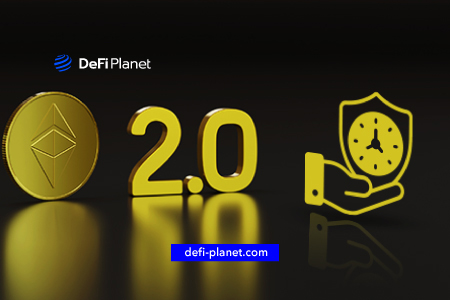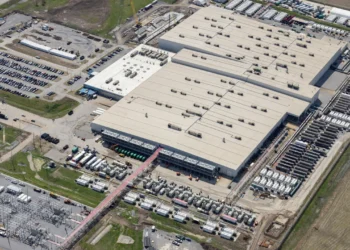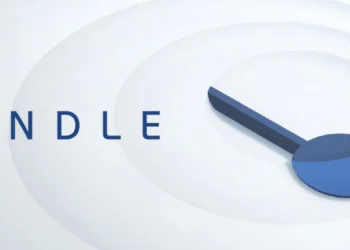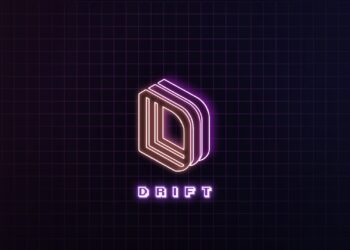Ethereum is a notable blockchain with smart contract functionalities, preferred by developers for creating decentralized apps and utility tokens. It is the home of decentralized finance platforms, as well as NFT projects.
With the increase in network congestion, the gas fees of the ecosystem have continued to rise, discouraging people from using it. Transaction speed is also a big issue with Ethereum, and more crypto enthusiasts have been clamoring for better and scalable options.
New blockchains claim to solve the scalability issues visible on Ethereum, but barely a few of them are working effectively. For instance, Solana has crashed on multiple occasions, notably when a new project conducted its TGE (Token Generation Event) on it.
Environmentalists have complained about the high computing power that Proof of Work networks use in mining. There have been intensified calls for Ethereum to migrate to a more scalable and energy-efficient consensus mechanism.
Ethereum Blockchain, in the future, will migrate to Ethereum 2.0 or Serenity. The upgrade intends to solve the current version’s scalability, efficiency, transaction fees, and speed problems.
This upgrade is intensive, which explains its division into different phases. The first phase is called the Beacon Chain, and it went live on December 1, 2020. Beacon Chain ushered in native staking to Ethereum, which is an element of a Proof of Stake network. This is not a part of the current Ethereum network, but the forerunner of the future version.
The Merge is the second stage, and it is expected to go live in 2022. This phase aims to merge the first stage – Beacon Chain with the Ethereum mainnet.
Shard Chains are a component of the final phase and are responsible for scaling the Ethereum network. Transactions will no longer be settled on a single chain; instead, verification will occur on multiple chains (numbering sixty-four).
Limitations of the Ethereum Blockchain
Though Ethereum has different benefits, it is plagued with varying issues that have increased the calls for better alternatives, in the form of new blockchains or the upgrade of the existing network.
• Scalability
As the usage of a network increases, so does the need to scale with it. Ethereum has this issue because as the demand for its infrastructure heightened, it was unable to scale and accommodate it. This resulted in high gas fees, slower transaction speed, and other issues.
• Gas fees
Transaction fees have increased significantly on Ethereum 1.0 over the years, rising from a couple of cents to hundreds of dollars. Sometimes, people clamoring to mint an NFT before the sale period ends pay the top dollar, leading to gas wars. Gas wars are common in the minting phase of popular NFT projects. Potential community members opt to pay a lot in gas fees to have their transactions verified ahead of others. This is why the concept of whitelist was incorporated into NFT projects. Whitelist allows a set of people to mint their NFTs ahead of the public, thereby reducing the occurrence of gas wars.
Using decentralized finance protocols on Ethereum may be expensive, eating into the potential profits that the user intends to make. Developers have to pay a lot to launch their smart contracts on Ethereum and build their decentralized apps. This is a pain point that new blockchains claim to solve.
• Transaction speed
With network congestion, transaction speed has continued to decrease, especially for users who have refused to pay higher gas fees.
The transaction speed of Ethereum, when compared with traditional payment solutions like VISA is relatively low.
• Centralization
Though Ethereum claims to be decentralized, it exhibits some elements of centralization, common in proof of work networks. Miners need a lot of computational power to solve cryptographic puzzles, something most crypto enthusiasts can’t afford. This limits the mining process to a select few.
• High computing power
Proof of Work consensus mechanism functions when miners compete with one another to solve cryptographic puzzles. The winner usually verifies the transactions and is rewarded. As the network with a PoW consensus algorithm continues to expand, there is a need for higher computing power.
• Energy problem
PoW network mining is a major environmental issue. Mining consumes a large amount of electricity and emits a lot of heat into the environment. Environmental groups have called for a ban on mining activities. Some countries tax miners heavily, while others have outrightly banned the activity.
Features of Ethereum 2.0
With the potential upgrade of Ethereum to Ethereum 2.0, there are new features that will be visible in the latter.
• Consensus mechanism
A major difference between both networks will be the consensus algorithm used in verifying transactions. Ethereum utilizes Proof of Work, while Serenity or Eth2.0 will opt for a greener version, Proof of Stake.
In the Proof of Work, miners have to solve complex mathematical puzzles, and the winner is allowed to verify the transactions. Usually, the process is complex and requires high computing power.
On the other hand, the Proof of Stake consensus mechanism uses a validator system. Depending on the variant of the PoS system that is used, community members delegate
their tokens to validators that verify transactions. Validators are chosen based on the style of Proof of Stake that is being employed.
• Staking
Ethereum 2.0 will allow holders of the native token to stake or delegate their tokens to any Validator of their choice, and earn rewards at the end of the period. At the moment, people can stake their Ether on some exchanges.
• Transaction fees
When Ethereum migrates to PoS, it is believed that transaction fees will plummet. It will become more practical to use for minting NFTs, utilizing decentralized finance projects, and much more.
• Scalability
The main reason for the upgrade is scalability. Ethereum 1.0 supports only a few transactions per second, which is poor compared to what traditional payment platforms achieved in that period. In Eth2.0, it is expected that transaction speed will increase tremendously to hundreds of thousands of transactions per second. Ethereum intends to achieve this via shard chains, meaning that transactions will not be verified in one network.
The phases of implementation for Ethereum 2.0
Ethereum 2.0 will be implemented in stages to ensure optimal functionality and the identification of any potential bugs. The implementation phases will last several years.
• Beacon Chain
This is the first phase of the journey of Ethereum 2.0 or Serenity. Beacon Chain is currently live, and it is a brand new chain with a Proof of Stake consensus mechanism. It will be merged with the existing Ethereum solution in the next phase.
This chain comes with PoS functionalities such as staking. It acts as a testnet of what is expected to come in the future.
• The Merge
The second phase is called The Merge. In this phase, the Beacon Chain will be merged with the existing Ethereum network.
The successful completion of this phase indicates an official network switch from PoW to PoS. The Merge is scheduled to be operational in 2022. Ethereum users are not required to do anything during this phase, as it is an automatic process.
• Shard chains
The third phase involves implementing shard chains, which will drive the scalability of the Ethereum network. With sharding, transactions will be verified on multiple and independent chains, instead of a single network.
Benefits of Ethereum 2.0
Ethereum 2.0 promises to offer incredible benefits to users and developers. Some of which include:
• Cheaper fee structure
It will become significantly cheaper to use decentralized apps on Ethereum, and developers will pay lower fees to launch a smart contract on the network.
• Cost per transaction
Miners’ cost per transaction will also drop significantly as the power consumed by their mining operations reduces.
• Efficient transactions
The average Ethereum user will benefit from the efficient transaction in terms of speed and lower cost structure. The validator, on the other hand, can verify a higher number of transactions than under the existing structure.
• More decentralized finance solutions
With the lower fee structure, crypto enthusiasts will use DeFi protocols easily, while driving their massive adoption. It will also encourage developers to launch more innovations around NFTs, security tokens, lending protocols, and other types of DeFi solutions.
• Decentralization
Ethereum 2.0 will add more elements of decentralization to the network, as more people can become validators, and token holders can decide to delegate their Ether for rewards.
In Conclusion,
- Ethereum 2.0 will solve the existing problems in Ethereum 1.0.
- The upgrade will be implemented in phases: Beacon chain, The Merge, and Shard chains.
- The upgrade will span several years.
- It will highlight the movement from PoW to PoS.
- There is no fixed timeline of when the entire process will be completed.
If you would like to read more articles like this, follow DeFi Planet on Twitter and LinkedIn























